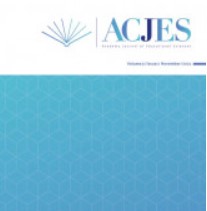Evaluation of Three-Dimensional Artworks Through Views of Pre-Service Visual Arts Teachers
Evaluation of Three-Dimensional Artworks Through Views of Pre-Service Visual Arts Teachers
Author(s): İsmail EYÜPOĞLU, Şehnaz YALÇINSubject(s): Visual Arts, Higher Education , Cognitive Psychology, Developmental Psychology, Pedagogy
Published by: Abdullah KALDIRIM
Keywords: Arts Education; Three-Dimensional Art Works; Sculpture; Anatomy; Sense Of Touch;
Summary/Abstract: Many studies on art education outline the positive effects of arts education on individuals' cognitive, social and emotional development; however, it can be seen that three-dimensional studies cannot be conducted adequately due to various reasons such as insufficient workshop facilities, short course durations, and difficulties in accessing materials in visual arts courses in state schools in Turkey. Therefore, it is possible to say that arts education will be incomplete in many aspects when including threedimensional artworks are not included in the educational practices. From this point of view, this study aimed to interpret the opinions of preservice visual arts teachers regarding their views on three-dimensional artworks within the scope of the elective art workshop sculpture course. Therefore, as a qualitative research method, the ‘case study’ design was employed in the study. The study group consisted of 24 preservice visual arts teachers studying Visual Arts and Crafts Education Bachelor of Arts program at 4th grade at a state university in the Western Black Sea Region in Turkey. The research data were obtained through semi-structured interview forms and analyzed by the content analysis method. The study results showed that preservice visual arts teachers found the "plaster figure-sculpting" and "aerated concrete portrait block" artworks made within the scope of the elective art workshop sculpture course helpful in perceiving threedimensional forms and understanding human anatomy. Moreover, they stated that they might prefer such works in their professional lives because it is convenient in terms of material cost and accessibility.
Journal: Academy Journal of Educational Sciences
- Issue Year: 5/2021
- Issue No: 2
- Page Range: 52-59
- Page Count: 8
- Language: English

